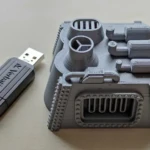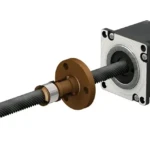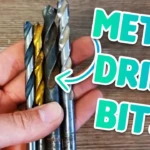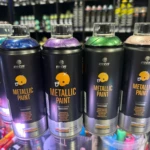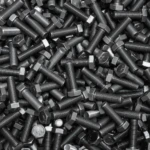18/8 Stainless Steel Vs 304 Stainless Steel : A Technical Comparison for Precision Applications
| Parameter | 18/8 Stainless Steel | 304 Stainless Steel |
|---|---|---|
| Composition | 18% Cr, 8% Ni, ≤0.08% C, ≤2% Mn, ≤1% Si, ≤0.045% P, ≤0.03% S, balance Fe | 17.5-20% Cr, 8-10.5% Ni, ≤0.08% C, ≤2% Mn, ≤1% Si, ≤0.045% P, ≤0.03% S, ≤0.10% N, balance Fe |
| Microstructure | Austenitic (FCC lattice), non-magnetic (μ ≈1.02), potential delta-ferrite 0-5% | Austenitic (FCC), non-magnetic unless cold-worked, delta-ferrite 0-5% |
| Tensile Strength | 515-690 MPa | 515-620 MPa |
| Yield Strength | 205-310 MPa | 205-240 MPa (annealed) |
| Hardness | 85-95 HRB | ≤92 HRB |
| Elongation | 40-60% | ≥40% |
| Density | 8.0 g/cm³ | 8.0 g/cm³ |
| Thermal Conductivity | 16.2 W/m·K (at 100°C) | 16.2 W/m·K (at 100°C) |
| Corrosion Resistance | PREN ~20-22, good in mild acids/atmosphere, pitting temp ~20°C | PREN ~20-22, identical resistance, enhanced in 304L variant |
| Machinability | ~45% of mild steel, work-hardening n≈0.45 | ~45% of mild steel, similar challenges |
| Weldability | Good, but sensitization risk; use low-carbon variants | Excellent, 304L preferred for welding |
| Applications | Cookware, fasteners, automotive trim, general use | Aerospace, chemical tanks, food processing, prototypes |
| Magnetic Properties | Non-magnetic unless cold-worked | Non-magnetic unless cold-worked |
| Cost | Lower for generic formulations | Slightly higher due to certification |
| Standards | Nominal designation | AISI 304, UNS S30400, ASTM A240 |
Composition and Microstructure: Breaking Down the Alloys
At the core of the “18/8 stainless steel vs 304 stainless steel” debate lies their chemical makeup. 18/8 stainless steel derives its name from its nominal composition: approximately 18% chromium (Cr) and 8% nickel (Ni), balanced with iron (Fe) as the primary base, along with minor elements like carbon (C ≤ 0.08%), manganese (Mn ≤ 2%), silicon (Si ≤ 1%), phosphorus (P ≤ 0.045%), and sulfur (S ≤ 0.03%). This austenitic structure, stabilized by Ni, ensures a face-centered cubic (FCC) lattice that provides ductility and non-magnetic properties (permeability μ ≈ 1.02).
In contrast, 304 stainless steel—designated under AISI/SAE standards—is defined more precisely: Cr 17.5-20%, Ni 8-10.5%, C ≤ 0.08%, Mn ≤ 2%, Si ≤ 1%, P ≤ 0.045%, S ≤ 0.03%, and N ≤ 0.10%. The slight range variations allow for optimized variants like 304L (low carbon, C ≤ 0.03%) for improved weldability. Microstructurally, both exhibit austenite phases with potential delta-ferrite (0-5%) depending on processing, but 304’s tighter specs minimize variability in grain size (ASTM 7-9) and inclusion content.
Is 18/8 stainless steel the same as 304? Technically, yes—18/8 is a colloquial term for 304-grade alloys meeting the 18% Cr/8% Ni threshold. Differences arise in certification: 304 adheres to UNS S30400, ensuring traceability for critical applications, while generic 18/8 may vary slightly in trace elements, affecting long-term stability.
Elemental Impact on Properties
Chromium forms a passive Cr2O3 oxide layer (thickness 1-3 nm), granting corrosion resistance via self-healing in oxidizing environments (pH 4-10). Nickel enhances austenite stability, boosting toughness (Charpy impact >200 J at -196°C) and formability (elongation >40%). Carbon, if excessive, risks carbide precipitation (Cr23C6) during sensitization (425-815°C), reducing intergranular corrosion resistance—mitigated in 304L.
For machining, both alloys’ work-hardening rate (n ≈ 0.45) demands sharp tools and coolants to avoid built-up edge formation.
Mechanical Properties: Strength, Hardness, and Durability
Both materials exhibit similar mechanical profiles due to shared austenitic nature. 18/8 stainless steel typically yields tensile strength of 515-690 MPa, yield strength 205-310 MPa, hardness 85-95 HRB, and elongation 40-60%. 304 stainless steel mirrors this: tensile 515-620 MPa, yield 205-240 MPa (annealed), hardness ≤92 HRB, elongation ≥40% (ASTM A240).
Fatigue strength stands at ~240 MPa (10^7 cycles), with excellent creep resistance up to 650°C (stress rupture ~100 MPa at 1000 hours). Thermal expansion is 17.3 × 10^-6 /K, conductivity 16.2 W/m·K at 100°C.
What is 18/8 stainless steel’s advantage? Its nominal composition allows cost-effective variants for non-critical uses, while 304’s standardized properties ensure consistency in high-stress scenarios like pressure vessels (ASME BPVC Section VIII).
Machinability and Formability Challenges
Machinability index is ~45% of mild steel, due to gummy chips and rapid hardening. Solutions: Use sulfurized variants (304F) or optimized feeds (0.05-0.15 mm/rev) in CNC. Formability excels in deep drawing (limiting drawing ratio ~2.2), but springback (3-5%) requires overbending.
Great Light’s 5-Axis CNC Machining addresses these: High-pressure coolants and carbide tools maintain surface integrity (Ra ≤0.8 μm), ideal for prototyping 18/8 components.
Corrosion Resistance: Performance in Diverse Environments
The hallmark of both is pitting resistance equivalent number (PREN ~20-22), owing to Cr content. 18/8 stainless steel resists atmospheric corrosion (rate <0.0025 mm/year) and mild acids (e.g., citric <10% at 50°C), but falters in chlorides (critical pitting temp ~20°C). 304 stainless steel performs identically, with enhanced resistance in low-carbon forms (304L) against intergranular attack post-welding.
Vs 316 (PREN 25-28): 304/18/8 lacks Mo, limiting use in marine (corrosion rate 0.01-0.1 mm/year) or chloride-rich settings. Solutions: Passivation with nitric acid (20-50%, 20-30 min) restores the oxide layer, boosting resistance by 2-3x.
18/8 vs 304 in corrosion: No practical difference; both suit food processing (FDA compliant) but require electropolishing for hygienic applications (Ra <0.4 μm).
Environmental Factors and Mitigation
In acidic foods (pH <4.5), leaching is minimal (<0.1 ppm Fe/Cr/Ni). Magnetic? No, unless cold-worked (ferrite formation <5%). Solutions for pitting: Alloy upgrades or coatings like TiN.
Great Light offers post-processing: Electropolishing reduces corrosion sites, enhancing 18/8 parts for aerospace.
Thermal and Electrical Properties
Both have melting range 1400-1450°C, specific heat 500 J/kg·K, and electrical resistivity 72 μΩ·cm. Thermal conductivity rises with temperature (16.2 W/m·K at 100°C to 21.5 at 500°C), supporting uniform heating in cookware.
What does 18/8 stainless steel mean for heat? Low conductivity (half of carbon steel) prevents hotspots, ideal for even cooking.
High-Temperature Behavior
Oxidation resistance to 870°C intermittent, 925°C continuous. Carbide precipitation risks sensitization; solution: Anneal at 1010-1120°C, quench.
In machining, heat buildup (up to 600°C at tool tip) demands flood cooling to avoid phase changes.
Applications: Where 18/8 and 304 Excel
18/8 stainless steel applications: Cookware (pots, pans—resists acids from food), water bottles (non-reactive), automotive trim (aesthetic durability). Vs 18/10: Similar, but 18/10 (higher Ni) for premium cutlery.
304 stainless steel applications: Aerospace fasteners (strength-to-weight), chemical tanks (corrosion resistance), automotive exhausts (heat tolerance). In prototyping, used for brackets, housings.
18/8 stainless steel cookware vs 304: Identical performance; 304 certification for industrial food processing.
316 vs 18/8: 316 for marine; 18/8 for general.
Great Light machines both for prototypes: Custom 18/8 parts online, with finishing for applications.
Industry-Specific Uses
Cookware: 18/8 (or 304) for even heat, magnetic base optional for induction.
Automotive: Exhaust systems (oxidation resistance to 800°C).
Aerospace: Non-structural (weight savings 30% vs aluminum in some fittings).
Solutions: Great Light’s CNC for rapid prototyping, solving formability issues with multi-axis precision.
Machining and Fabrication: Solutions for 18/8 Stainless Steel
18/8 (304) machines at 100-150 SFM with carbide tools, but gummy chips require peck drilling. Solutions: High-pressure coolant, coated tools reduce wear by 50%.
Yield strength 205 MPa allows deep drawing (ratio 2:1), but annealing post-form prevents cracking.
Great Light’s Prototype CNC Machining Services: 5-Axis for complex 18/8 parts, tolerances ±0.005 mm, online customization. One-stop: Machining + finishing (polishing, passivation).
18/8 vs 304 in machining: No difference; both require similar parameters.
Overcoming Common Challenges
Magnetic? Anneal to restore non-magnetism.
Safe? Yes, inert for food (leaching <0.05 mg/L Ni/Cr).
Properties: Density 8 g/cm³, modulus 193 GPa.
Great Light customizes: From design to delivery, solving startup scaling or multinational supply needs.
Choosing Between 18/8 and 304: Practical Guidance
Since they are the same (18/8 = nominal 304), choose certified 304 for traceability. For better (18/10 or 316): Higher Ni/Cr/Mo for corrosion.
Which is better 18/8 or 18/10? 18/10 (higher Ni) for polish, but similar strength.
Great Light advises: For prototypes, 18/8/304 balances cost/performance; customize online.


